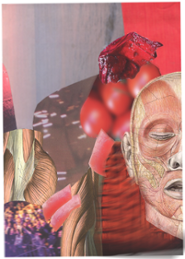
How can people with autism and social anxiety understand others’ emotions better?
A smile, tears in your eyes or a blush on your cheeks: we understand one another better by mirroring one another’s emotions. In her PhD dissertation, Julia Folz concludes that people with autism or social anxiety can be helped by interventions focused on the body.

It is important to understand what other people are feeling during conversations. Julia Folz, PhD candidate in cognitive psychology, explains that this is not just about what someone says. ‘We also show our feelings through facial expressions, such as smiling, or blushing. We not only observe other people’s emotions, but also subconsciously mirror them.’ But not everyone finds this easy to do. ‘People with autism or social anxiety find it harder to understand the emotions of other people,’ Folz says. She therefore decided to find out how automatic physical reactions to facial expressions differ for people with autism and social anxiety.
Interventions
The findings from Folz’s research show that people with autism and social anxiety do indeed process these subconscious physical reactions differently. She explains: ‘People with autism mirror emotions less. They also make less use of the information from their own body to interpret the emotions of the other person.’ Folz believes that interventions can help in better understanding the emotions of other people. ‘I think that people with autism can be trained to interpret internal signals so that they are better able to understand what others are feeling.’ Follow-up research is needed to determine how effective such training could be.
'People with autism or social anxiety find it harder to understand others' emotions'
Influence of the body
It was more difficult to draw conclusions about people with social anxiety disorder. Folz explains that, because of the corona pandemic, in her research she was not able to study actual conversations. That is precisely what this group of people are afraid of. She comments: ‘There were not many differences, but there was some evidence that stronger physical reactions can cause emotional expressions to be perceived as more intense.’ Further research is needed to draw definitive conclusions on this. Nonetheless, Folz believes that interventions can be effective: ‘I think it’s important to make sure that in social situations they don’t overestimate what is going on in their body, but that they are able to gauge their physical responses more realistically. It’s valuable for them if they can differentiate: “OK, this is happening to me because I’m feeling anxious”, and “Those are the reactions that the other person is showing”.’
Different measurement methods
Folz used several different methods to arrive at these results. ‘I studied how people mirror facial expressions by placing sensors on their face and measuring the changes in the activity of their facial muscles. I also observed reactions like sweating, which often indicates that a particular emotion is being experienced. I also looked at the skin temperature on the cheeks to see whether people were blushing.’
In the first phase of the study, the group of participants did not include people who were actually diagnosed with autism or social anxiety. ‘It’s more difficult to recruit people with a diagnosis. Also, you have to make sure that everything works smoothly and that the experiment doesn’t cause them any undue stress,’ Folz explains. To minimise the potential stress, participants with an autism or social anxiety diagnosis only took part in the final phase of the study.
'There is no one ‘right’ way is to interpret emotions'
Side notes
There is, of course, nothing wrong with the way people with social anxiety and autism copy facial expressions and interpret signals from their body. ‘It’s important to say that there isn’t one “correct” way to interpret an emotional expression. Besides, people can still be very successful, even if they make very little use of this physical information,’ Folz says.
